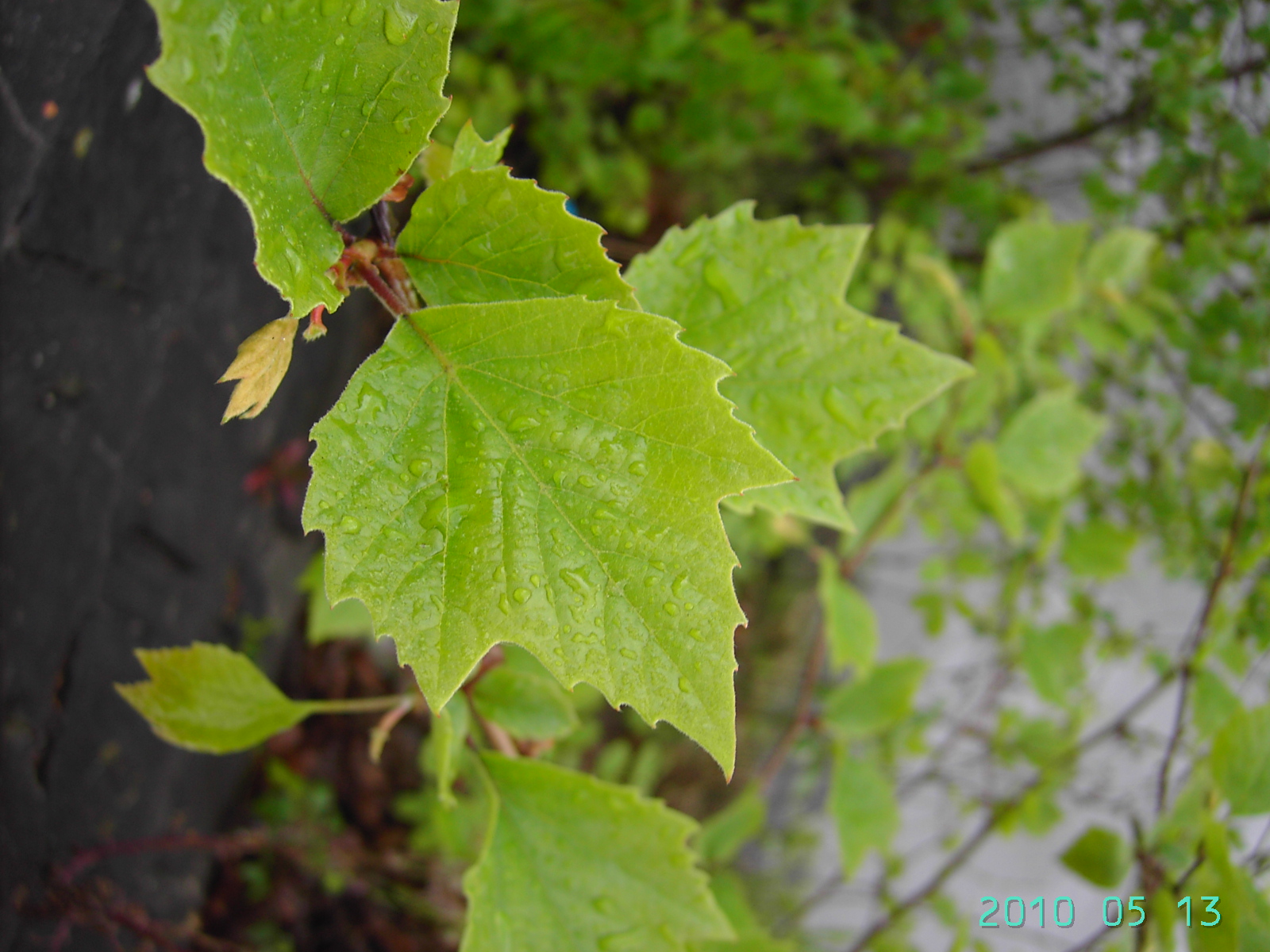Platanus hispanica Münchh. (syn.: P. acerifolia (Ait.) Willd., P. densicoma Dode; P. occidentalis L. x P. orientalis L.) (Hybr.) – A relatively rare but much increasing escape from cultivation. First subspontaneous occurrences date back to 1985 (Verloove 2006). Since then Platanus hispanica is reproducing sexually in many places where it has been planted in the past. In Brugge numerous self-sown young trees were noted in cracks of canal walls in the city center (Verloove 2002). In similar circumstances it has been recorded in several other cities, for instance in Antwerpen, Gent and Brussels. Genuinely naturalized populations, however, probably are unknown so far. Platanus hispanica seems to germinate and develop preferably in riparian habitats in Belgium. Seedlings and saplings are sometimes seen in large numbers on gravelly river banks, especially of river Maas. Mortality, however, seems to be high and relatively few individuals survive higher water levels during winter. However, near-adult trees are regularly seen and a future naturalization therefore is likely in this area. Similar records are known from other rivers as well, for instance from Leie and Schelde.
Platanus hispanica is by far the most widely planted species of the genus in Belgium. Its origin long remained uncertain. It was either considered a hybrid between Platanus occidentalis and P. orientalis or a cultivar of the latter. Vigouroux & al. (1997) confirmed its hybrid nature, based on molecular data. P. hispanica is fertile and very variable. Some forms are closer to one parent (the plants formerly described as P. densicoma are morphologically similar to P. occidentalis), others to the other. For instance, cultivar ‘Digitata’ has deeply lobed leaves similar to those of P. orientalis. Claims of both parent species in the wild in Belgium are mostly erroneous and refer to extreme forms of P. hispanica. Only P. orientalis has been reliably recorded so far (see there).

Selected literature
Adolphi K. (1984) Platanus hybrida Brot. verwildert im Rheinland. Gottinger Flor. Rundbr. 18(1-2): 4-6.
Bolman J. (1966) Platanenbloei. Natura (Amsterdam) 63: 33-34.
Brennenstuhl G. (1990) Zur Verwilderung von Platanus x hybrida Brot. in Ost-Berlin und Dresden. Floristische Rundbriefe 24(2): 99-103.
Fontaine F.J. (1975) Het geslacht Platanus naar aanleiding van "London Plane'" als Platanus (x) hispanica. Groen (Netherlands) 31(10): 297-303.
Geerinck D. (1979) Platanua x hispanica Mill. ex Münchh. cv. 'Acerfolia', nom correct du platane hybride ou à feuilles d'érable. Bull. Jard. Bot. Belg. 49: 160-161.
Geerinck D. (1998) Taxonomic and nomenclatural reflections about a few trees cultivated in Europe: genera Acer, Aesculus, Betula, Crataegus, Platanus, Prunus, Quercus and Taxus. Belgian J. Bot. 130(2): 119-130.
Hadfield M. (1960) The mystery of the London Plane. Gard. Chron., Ser. 3, 148: 422-423, 443 & 463.
Hadfield M. (1968) Notes on the London Plane. Gard. Chron., Ser. 3, 164(1): 7-8.
Kowarik I. (1984) Platanus hybrida Brot. und andere adventive Gehoelze auf staedtischen Standorten in Berlin (West). Göttinger floristische Rundbriefe 18 (1/2): 7-17.
Kowarik I. (ed.) (1987) Platanen auf Stadtstandorten. Berlin, Universitätsbibliothek / Abteilung Publikationen: 105 pp. [available online at: https://www.researchgate.net/profile/Ingo_Kowarik/publication/311451119_...
Lopez Gonzalez G. (1998) Sobre el platano de paseo, Platanus orientalis L. var. acerifolia Dryand. (Platanaceae), y su posible origen. Anales Jard. Bot. Madrid 56(1): 159-161. [available online at: https://dialnet.unirioja.es/servlet/articulo?codigo=70521]
Rose N. (2014) A Shady Character: Platanus × acerifolia. Arnoldia 72(1): 36. [available online at: http://arnoldia.arboretum.harvard.edu/pdf/articles/2014-72-1-a-shady-cha...
Santamour F.S. (1972) Interspecific hybridization in Platanus. Forest Sci. 18(3): 236-239.
Verloove F. (2002) Ingeburgerde plantensoorten in Vlaanderen. Mededeling van het Instituut voor Natuurbehoud n° 20: 227 p.
Verloove F. (2006) Catalogue of neophytes in Belgium (1800-2005). Scripta Botanica Belgica 39: 89 p. [available online at: http://alienplantsbelgium.be/sites/alienplantsbelgium.be/files/tabel_2.pdf]
Vigouroux A., Besnard G., Sossey-Alaoui K., Tersac M. & Bervillé A. (1997) Le statut d'hybride de Platanus acerifolia confirmé et celui de P. densicoma mis en évidence à I'aide de marqueurs génétiques moléculaires conséquences. Acta Bot. Gallica 144(2): 243-251. [available online at: https://www.tandfonline.com/doi/pdf/10.1080/12538078.1997.10515772]

